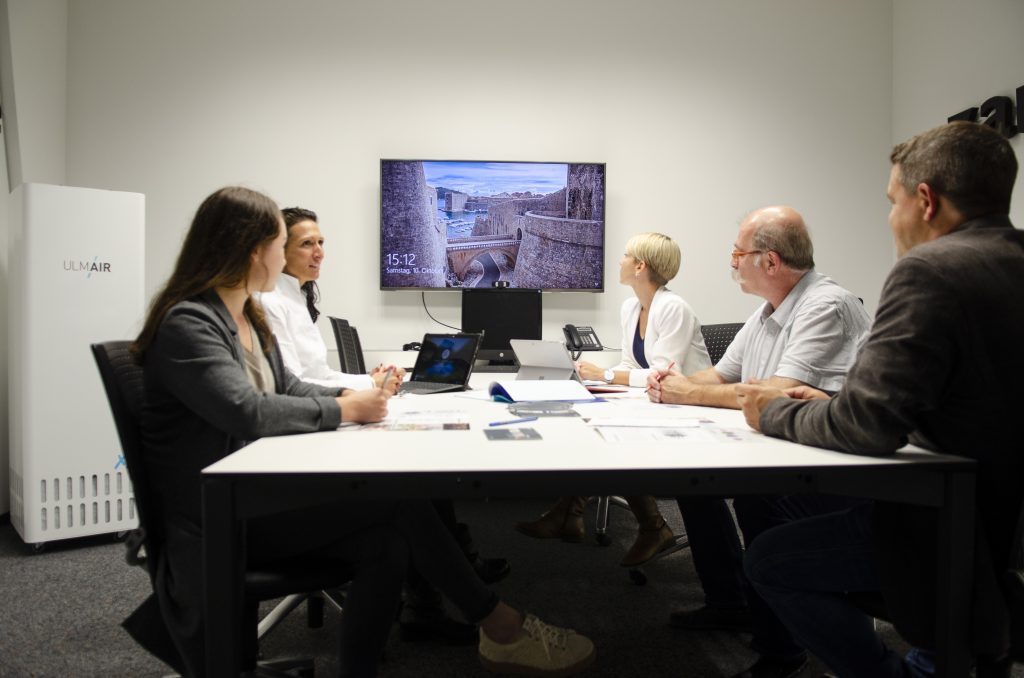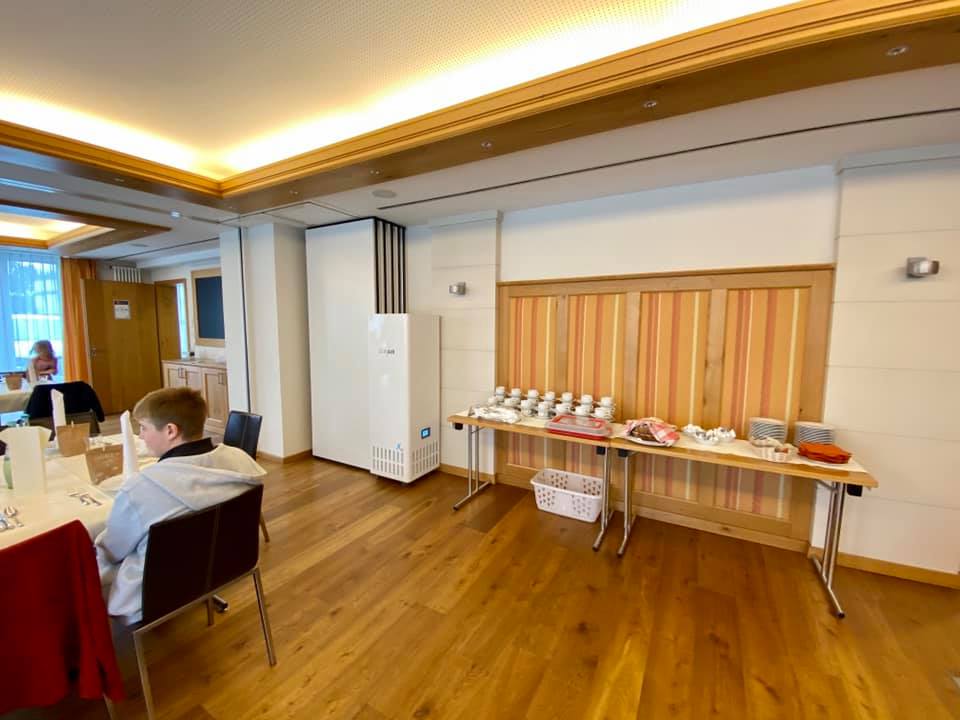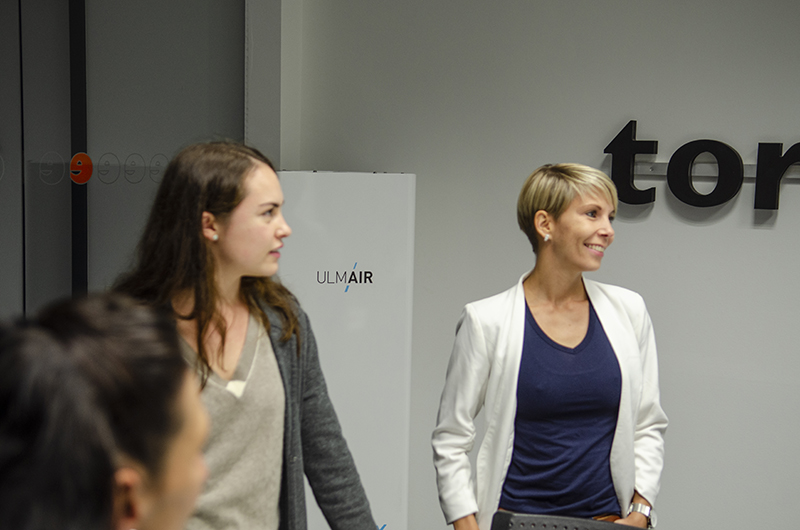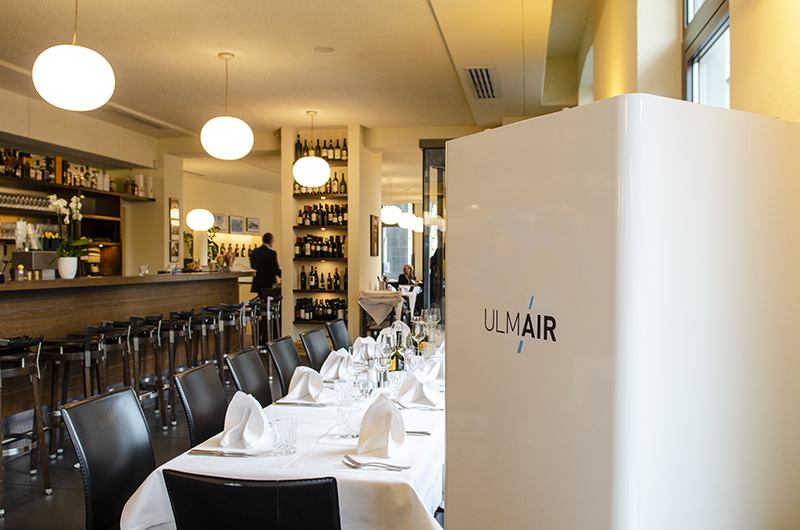Sechs renommierte Deutsche Wissenschaftler, wie Professor Hendrik Streeck, Direktor des Institutes für Virologie am Universitätsklinikum Bonn, und Professor Dieter Köhler, Pneumologe aus Schmallenberg, haben in einer öffentlichen Stellungnahme Maßnahmen vorgeschlagen, mit denen Ansteckungen mit den Covid-19 Virus in Innenräumen reduziert werden. Eine große Rolle wird dabei den Raumluftreiniger zugewiesen, wie die X-Serie von UlmAIR. Denn es sei eine „wissenschaftlich unumstrittene Erkenntnis“, dass „Innenräume die zentralen Infektionsorte“ seien.
Wir geben Ihnen hier einen Auszug der unter anderem auf der Website
www.sokrates-rationalisten-forum.de/stellungnahmen-und-wissenschaftliche-beiträge
stehenden Stellungnahme wider. Den gesamten Text können sie auf den Seiten nachlesen unter „Der Lufthygiene-Check – Sichere Räume in einer Pandemie“.
Die von dem Wissenschaftler-Konsortium vorgeschlagenen acht konkreten Maßnahmen, um in geschlossenen Räumen die Ansteckung durch das Covid-19-Virus zu verhindern:
In der Außenluft gibt es keine relevante Ansteckungsgefahr (<0,01% im Vergleich zu Innenräumen). Die Ursache ist in dem vom Menschen durch die warme ausgeatmete Luft und die Körperwärme erzeugten Vertikalflow zu finden (bis zu 100m³/h). Dieser verdünnt die abgeatmeten Aerosole stark. Windströmung draußen im Freien verdünnt die Konzentration zusätzlich.
Der Lufthygienecheck setzt sich aus den folgenden Parametern zusammen:
1. Anzahl der Personen, die sich in einem unbelüfteten Raum aktuell aufhalten oder sich bis vor kurzem aufgehalten haben. Mit der Anzahl der Personen steigt die Wahrscheinlichkeit, dass sich ein Infizierter im Raum befindet, und je mehr Menschen im Raum sind, umso mehr können sich potentiell infizieren.
2. Aufenthaltszeit. Durch eine infektiöse Person im Raum steigt die Konzentration der Viren in der Zimmerluft mit der Zeit und je länger sich nicht infizierten Personen in dem Raum aufhalten, desto mehr Viren inhalieren sie.
3. Volumen des Raumes. Je größer der Raum, umso geringer ist die Konzentration der Viren im Raum.
4. Raumhöhe. Dank dem vom Menschen erzeugten Vertikal-Flow sind hohe Räume besonders sicher, denn die abgeatmeten virushaltigen Aerosole bewegen sich nach oben.
5. Effektivität der Lüftung. Die Frischluftmenge, die dem Raum zugeführt wird, verdünnt die Aerosole. Bei Fensterlüftung hängt das insbesondere von der Temperaturdifferenz drinnen/draußen und der Windbewegung ab. Je größer die Temperaturdifferenz, desto größer der Effekt. Allerdings steigt dann auch der Energieverbrauch durch die Abkühlung.
Effektivität von Raumluftreinigungsgeräten: Die praktisch aerosolfreie Luft, die von einem Luftreiniger in den Raum abgegeben wird, bestimmt die CADR = Clean Air Delivery Rate oder abgeblasene gereinigte Luft (m³/h).
6. Dauerhaftigkeit und Effektivität von Masken, die von den Personen im Raum getragen werden. Schutzschilde sind wirkungslos, da die infektiösen Aerosole dadurch nicht an der Ausbreitung im Raum gehindert werden.
7. Atemfrequenz und Atemtiefe der infizierten und nicht infizierten Personen im Raum. Vermehrte Ventilation entsteht zum Beispiel bei körperlicher Arbeit, Sport und Singen.
Besonders ungünstig sind kleine Räume ohne oder mit wenig Lüftung (kleine Büros und Aufenthaltsräume, Fahrstühle, Toiletten, Kraftfahrzeuge, öffentliche Verkehrsmittel, usw.) Hier kann eine konzentrierte infektiöse Aerosolwolke längere Zeit in der Luft stehen bleiben (ähnlich Zigarettenrauch) und dann Personen anstecken, die den Raum betreten (z. B. Reinigungspersonal). Mitunter sind sich Virusspreader und Infizierte nie begegnet.
Es gibt also eine Reihe von Maßnahmen, die man ergreifen kann, um eine Infektion in Innenräumen durch die Aerosolübertragung zu reduzieren:
– Begrenzung der Anzahl Personen in einem Raum;
– Begrenzung der Aufenthaltszeit der Personen in einem Raum;
–
Prioritäre Nutzung großer und hoher Räume (z. B. viele Turnhallen, Aulen brauchen deswegen meist keine zusätzlichen besonderen Schutzmassnahmen);
– Erhöhung der Frischluftzufuhr. Hier ist eine Kontrolle mittels CO2 Messgeräte eine Option;
– Einsatz effektiver Raumluftreinigungsgeräte. Hier ist eine Kontrolle über Aerosolmessgeräte möglich.
Im Wesentlichen gibt es zwei Möglichkeiten einen Raum von virenhaltigen Aerosolen zu befreien. Beide sind lüftungstechnische Maßnahmen:
Zuführung von Frischluft (Außenluft) durch geeignete Lüftungstechnik.
Raumluftreinigung mit geeigneten Luftfiltergeräten.
Wir schlagen zur Überprüfung der Effektivität der jeweiligen Maßnahme eine Kontrolle durch eine Kombination von zwei Messgeräten vor. Zum einen wird eine ausreichende Frischluftzufuhr mittels CO2 Monitor gemessen, zum anderen werden die Luftreinigungsmaßnahmen mittels Aerosol-Messgerät überprüft. Beide sollten zentral im Raum aufgestellt sein, ohne direkte Nähe zu Personen, denn die Ausatemluft kann die CO2-Konzentration lokal stark erhöhen. Sowohl Gastgeber als auch Besucher eines Raumes können sich überzeugen, wie gut die Raumluft in einer Einrichtung ist.
Die sechs Autoren
Dr. Ing. Achim Keune, VDI, DGUV Test geprüfter RLQ Manager, Hamburg;
Prof. Dr. med. Dieter Köhler (Dipl. Ing. FH), Schmallenberg;
Prof. Dr.-Ing. Rüdiger Külpmann, Hochschule Luzern, Technik & Architektur, Institut für Gebäudetechnik und Energie;
Dr. rer. nat. Gerhard Scheuch, PhD Gemünden;
Prof. Dr. med. Hendrik Streeck, Direktor des Institutes für Virologie am Universitätsklinikum Bonn;
Dr. med. Thomas Voshaar, Chefarzt Lungenzentrum Stiftung Krankenhaus Bethanien Moers.




